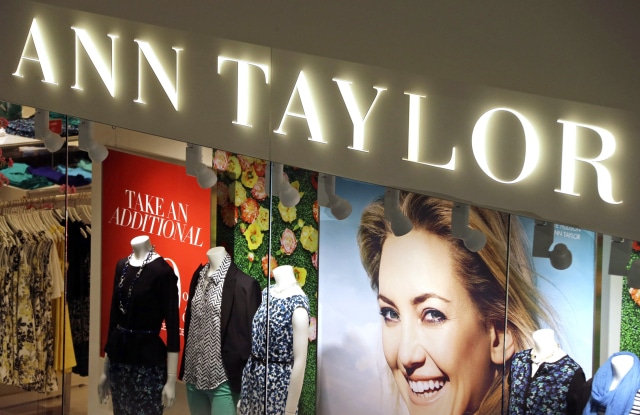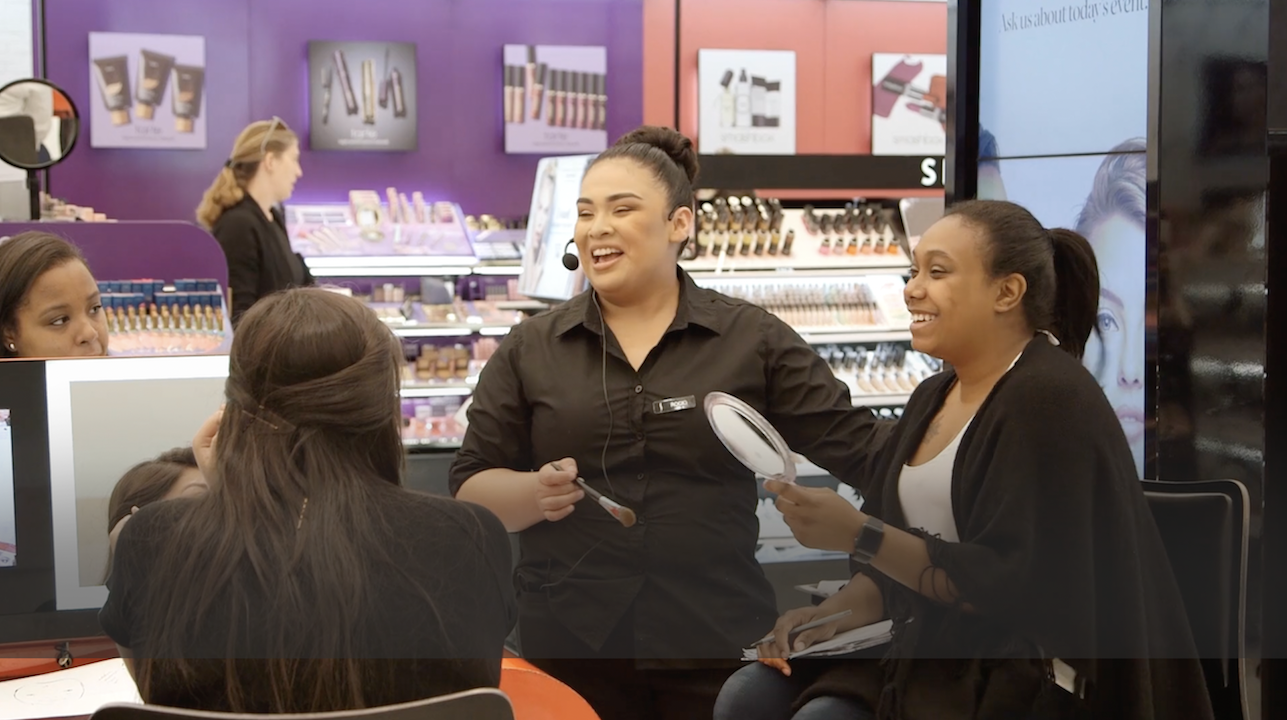Ascena Tackled a Tough Market and Fell Short – WWD
The Ascena Retail Group bit off more than it could chew and — in a desperate attempt to streamline — ran out of time.
COVID-19 cut short Ascena’s bid to remake itself as a smaller, more viable company, forcing it to file for bankruptcy on Thursday. The company has $1.3 billion in long-term debt and operates about 2,700 stores.
Ascena, which piled up its debt through a string of acquisitions over the years, said it entered into a restructuring agreement with more than 68 percent of its secured term lenders to reduce the debt by about $1 billion and provide $150 million in funding from the lenders, which, with cash flow from existing operations, would provide sufficient funds to continuing operating.
The company also said it will reduce its footprint by closing a significant number of Justice stores and certain Ann Taylor, Loft, Lane Bryant and Lou & Grey stores. “This includes the exit of all stores across brands in Canada, Puerto Rico and Mexico and the closure of all Catherines stores,” the company said Thursday. Prior to the coronavirus outbreak, Ascena liquidated Dressbarn and sold off the Maurices chain.
The total number of stores to close depends on negotiations with landlords and bankruptcy court permission. Bankruptcy allows retailers to vacate leases without penalties. Ascena is operating with about 95 percent of its stores reopened after shutting down temporarily earlier this year due to the coronavirus.
Ascena’s Chapter 11 petition was filed in the U.S. Bankruptcy Court for the Eastern District of Virginia. It’s just the latest in a string of bankruptcies this year by several major retailers including Neiman Marcus Group, J. Crew, J.C. Penney, RTW Retailwinds, Pier 1, Brooks Brothers, Modell’s, Stage Stores and Muji USA. More are expected, potentially J.Jill and Tailored Brands among them.
“The meaningful progress we have made driving sustainable growth, improving our operating margins and strengthening our financial foundation has been severely disrupted by the COVID-19 pandemic. As a result, we took a strategic step forward today to protect the future of the business for all of our stakeholders,” said Carrie Teffner, interim executive chair of Ascena.
“The RSA [restructuring agreement] formalizes our lenders’ overwhelming support for a comprehensive plan to deleverage our balance sheet, right-size our operations and inject new capital into the business. With the cash generated from our ongoing operations and the new money financing commitments we received from our lenders, we expect to have sufficient liquidity to meet our operational obligations during the court-supervised process,” Teffner added. “We expect to move through this process on an expedited time frame as our talented leadership team, established over the last year, stays focused on generating profitable growth and driving value for customers and stakeholders.”
Gary Muto, chief executive officer of Ascena, commented, “Ann Taylor, Loft, Lane Bryant, Justice and Lou & Grey have incredibly loyal customers who are at the center of everything we do. These iconic brands have significant long-term potential and we continue to deliver on their mission to provide all women and girls with fashion and inspiration to live confidently every day. This comprehensive restructuring, as well as the actions we are taking to optimize our brand portfolio and store fleet, mark a new start for our company and will allow us to expand our customer-focused strategies across her mobile, online, and store experiences.”
Ascena’s woes weave a tale of how management failed to execute on a vision to grow through aggressive acquisition and lead the mid-tier women’s specialty sector, which for years has been among the most troubled and competitive in retailing.
Originally, there was just Dress Barn, founded in 1962 by Elliot and Roslyn Jaffe in Stamford, Conn., around when women started entering the workforce in bigger numbers. The store was so named because of its rather unrefined setting. As the story goes, Elliot worked at Macy’s but grew disillusioned and decided to open a business. But Roslyn told him, “Keep your day job. I’ll start the business.”
A year later, with the store up and running, Elliot quit his job and joined his wife in the new venture. The entrepreneurial couple opened a second store in 1963, operated a warehouse literally in a former barn, and the path to growth began with a winning merchandise formula. It’s off-price offering of modest, inexpensive wear-to-work clothes had a lasting appeal to working women who needed to dress tastefully without turning heads. Dress Barn and its founders knew their customers well and successfully expanded the business at a steady rate, took the company public in 1983 when there were more than 50 stores, and maxed out the chain at almost 800 units, which were located mostly in strip centers and malls.
The founders’ son, David, a Stanford University MBA and former general partner at J.P. Morgan Chase Capital Partners, eventually joined his family’s business, bringing a different perspective on growing the company. The amiable and low-key scion took on wide responsibilities for store operations, marketing, real estate, store planning, leases, strategic planning and other functions, and led it in a strategic repositioning from an off-pricer to a vertically structured specialty retailer selling its private brand.
In 2002, David rose to ceo, succeeding his father. Seeing limited growth ahead for Dress Barn, and battling sluggish sales trends and tougher competition from the likes of Kohl’s, Target and Walmart, he orchestrated a buying spree, first with the acquisition of the Duluth, Minn.-based Maurices women’s sportswear chain in 2005, then the New Albany, Ohio-based Justice girls chain in 2009.
The Dress Barn division was renamed Dressbarn to reflect a younger appeal and merchandising changes to catch up to the nation’s casualization. In an interview with WWD at the time, David Jaffe said, “We intend to promote Dress Barn as a brand and a lifestyle, not just a label, to differentiate ourselves from our competition.”
In 2011, the company changed its name to Ascena Retail Group to reflect its transformation from owning a single brand to owning several. A year later, Ascena purchased Charming Shoppes, the holding company for Lane Bryant, Cacique and Catherines Plus. Three years later, the company bought Ann Inc., the parent of Ann Taylor, Loft and Lou & Grey, becoming a $5 billion retail conglomerate.
It was one acquisition after another, aimed at achieving economies of scale and pursuing a goal to become an industry force.
But instead of achieving dominance, the company mostly plodded through seasons of uneven performance across its divisions, as they catered to different demographics. Ascena was hampered by execution missteps, fashion misses and insufficient earnings to both support the debt and adequately update the apparel chains.
In May 2019, in a clear sign that the strategy had failed, Jaffe, under pressure, stepped down as ceo and chairman. He was succeeded by Muto, who was president and second-in-command, and earlier ran Ann Taylor and Loft. In the management upheaval, chief operating officer Brian Lynch also stepped down.
“David’s idea was to have a stable of businesses where each would retain its own front-of-the-house identity and be leveraged by back-of-the-house shared services. But the two biggest issues for Ascena was that it incurred so much debt to acquire these businesses and secondly, the portfolio eventually became the least desirable place to be in retail — mostly mall-based, mid-tier, apparel specialty retail — no man’s land,” observed Kirk Palmer of Kirk Palmer Associates executive search.
“Ascena has been experiencing accelerated headwinds due to COVID-19, workwear being an out-of-favor category, and having a [high] percentage of their physical retail locations located in malls,” said Melissa Gonzalez, ceo of The Lionesque Group. “We have seen a strong swing to loungewear and/or dressing from the waist up, which didn’t bode well for their portfolio of brands. Per COVID-19, they needed to make significant investments into strengthening their digital business to better serve evolving consumer needs and expectations.”
“It was all good intentions, but at the end of the day there were too many brands and leadership that didn’t fully understand what it takes to manage that kind of portfolio,” said one retail expert who has been close to the business.
“After the acquisitions, they were able to get economies of scale, but they didn’t buy companies that were stellar. They took advantage of a softer market to add to their portfolio,” the retail source said. “But if you don’t update and modernize both brick-and-mortar and digital operations, it’s just not going to work. If you walked into their stores, you saw that they hadn’t changed much over the years.”
According to another source, Jaffe once said, “I’m fine with the businesses nobody else wants.”
David Jaffe and Gary Muto, former and current ceo’s, respectively.
Thomas Iannaccone/WWD, Penske Media
Muto came on strong, launching a battery of turnaround efforts, including a tighter test and react approach to more quickly respond to shoppers, prospecting new customers, advancing personalization, adjusting styles at Ann Taylor with more day-into-evening looks for versatility, adjusting styles at Loft to be less serious and more playful, and at the kids division, amplifying digital marketing, adding better values and some omnichannel capabilities.
In the past year, Ascena liquidated Dressbarn, which had been struggling to update its image for some time and had already begun closing stores. A majority stake in Maurices was sold, and the company attempted to sell Lane Bryant, Catherines and Justice. It even tried to sell its 20-acre headquarters in Mahwah, N.J. Muto’s mission was to downsize the company into something smaller and more viable, and survive with Loft, the most consistent performer in the portfolio, and Ann Taylor.
“It was too little too late. The hit of the pandemic gave them no breathing room to turn things around,” said the source close to the company.
In its second fiscal quarter which ended Feb. 1, Ascena moved deeper into the red, but Muto cited progress in the streamlining with Dressbarn liquidated and a majority stake in Maurices sold off, as well as margin improvement, cost reductions and inventory reductions. The company reported a net loss from continuing operations of $132 million, compared with a net loss from continuing operations of $81 million in the year-ago period. Net sales dropped 2 percent to $1.22 billion compared with $1.27 billion in 2018. Comparable sales declined 2 percent. The worst-performing segment was Justice, while the plus-size chains did the best.
Last year, Ascena had a net loss of $661.4 million and total sales of $5.5 billion. In fiscal 2018, the company reported a loss of $39.7 million and $5.57 billion in sales.
The company also said it was no longer in active discussions to sell off any brands. It’s believed there were no takers at prices deemed acceptable to Ascena.
Coming into the new year, Ascena’s interim executive chair, Carrie Teffner, insisted that bankruptcy was not an option. The company had sufficient liquidity, she said.
In mid-March, Ascena temporarily closed all of its stores due to the outbreak, as did all other non-essential retailers. And by May, as the company began reopening stores when local and state governments gave the OK, Teffner’s tone had dramatically changed. “COVID-19 has significantly disrupted our business,” she said. “Despite aggressive actions to preserve liquidity, the pandemic has significantly reduced our earnings and cash flow, resulting in increased levels of debt and deferred liabilities. With retail stores making up the majority of our revenue and cash flow, the uncertainty created by COVID-19 requires us to evaluate all options available to protect the business and its stakeholders.”
“I still think Lane Bryant, Loft and Ann Taylor each has their place [in the industry],“ Palmer said. “The rest, not so much. The Ascena model was one that’s been used by other retailers such as L Brands, Gap Inc. and Chico’s, with early success, although none have been doing very well for the past several years.”
Loft’s performance has generally been strong but overshadowed by difficulties at its parent company Ascena.
Lev Radin/Pacific Press/Shutterstock
THE TEN UNSECURED CREDITORS ASCENA OWES THE MOST
Simon Property Group, $31.7 million
Brookfield Properties, $16.6 million
Boston Properties, $8.8 million
Tanger Properties, $7.2 million
Pan Pacific Co., $6.8 million
MGF Sourcing, $6.7 million
SAE A Trading, $6.3 million
Orient Craft, $5.3 million
The Macerich Co., $5.3 million
HIP Sing China Industrial, $5 million





